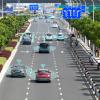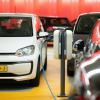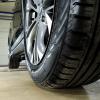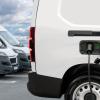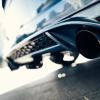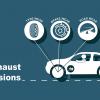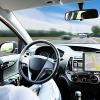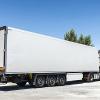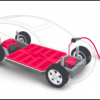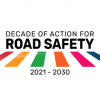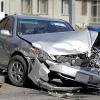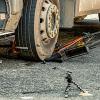Press Releases
Displaying Results 1 - 25 of 52
A new United Nations Regulation on Driver Control Assistance Systems (DCAS), adopted by the UNECE World Forum for the Harmonization of Vehicle Regulations (WP.29) at its session in March 2024, has entered into force.
Regulation No. 171 defines DCAS as systems which assist the driver in
Despite a rapid increase in motorization over the past 20 years, the number of people killed in road crashes in the Republic of Moldova has decreased by 51% from 2011 to 2022, from 443 to 217. With 8.3 deaths per 100,000 inhabitants, this is, however, still 1,8 times higher than the average in the
UNECE’s World Forum for Harmonization of Vehicle Regulations (WP.29) has adopted an amendment to the United Nations Rule No.1 of the 1997 Agreement that allows for the introduction of a more robust test procedure to measure exhaust particle emissions during periodic technical inspection tests for
The United Nations’ Working Party on Automated/Autonomous and Connected Vehicles (GRVA) has adopted the new regulation for Acceleration Control for Pedal Error (ACPE), and regulatory provisions for the introduction of a new generation of braking systems for electric vehicles.
The new UN
In the declaration issued following their latest meeting in Milan, G7 transport ministers have recognized the role of UNECE in advancing sustainable low-carbon mobility. In particular, they welcomed the recently adopted UNECE Strategy on Reducing Greenhouse Gas Emissions from Inland Transport,
Following the adoption last year of a methodology to measure the emissions from braking systems, UNECE’s World Forum for Harmonization of Vehicle Regulations (WP.29) now turns to tackling emissions from tyres.
Made from a mixture of natural and synthetic rubber and plastic polymers, including
UNECE’s Working Party on Automated/Autonomous and Connected Vehicles has adopted the draft of a new regulation that defines provisions for the approval of vehicles with Driver Control Assistance Systems (DCAS) and provides minimum safety requirements for vehicles equipped with the Advanced Driver
UNECE’s Working Party on Automated/Autonomous and Connected Vehicles today decided to include motorcycles, scooters and electric bicycles with speed exceeding 25 km/h in the scope of the UN Regulation No. 155 on cyber security and cyber security management.
In force since January 2021, UN
Batteries fitted to electric vans will be required to be of high quality and durable over the years thanks to a proposal agreed today by UNECE’s Working Party on Pollution and Energy (GRPE).
The proposal will now be submitted to the UNECE-hosted World Forum for Harmonization of Vehicle
The majority of the buses and coaches currently in use worldwide are not equipped with safety-belts. And if they are, they are equipped with safety-belts designed to protect adults by means of 2-point or 3-point harness seat belts. These types of safety-belts are not suitable for use on and by
The need to decarbonize the transport sector is driving the rapid expansion of electric cars, which totaled 10 million sales worldwide in 2022 (for a market share of 14% of total sales) up from just around 1 million in 2017.
Electrification is also extending to heavy-duty vehicles, such as
The accurate measurement of vehicles’ tailpipe emissions, a key element in governments’ policy decisions and consumers’ choices to reduce the impact on air quality and the environment, will be significantly enhanced thanks to the adoption today of the United Nations Regulation on global Real
Following strong reduction from exhaust particle emissions (PM 2.5 and 10) over the past 20 years, due to international and national vehicle regulations, non-exhaust sources now make up approximately 80% of particle emissions from vehicle use, compared to some 40% in 2000. Non-exhaust emissions
The limited ability of drivers to detect and see correctly pedestrians in close proximity of their vehicle is a key cause of accidents, both for cars and light vehicles, and for heavy duty vehicles. Two new UN regulations adopted recently by UNECE’s World Forum for the Harmonization of Vehicle
A new milestone in mobility has been reached with the adoption of a proposal to extend automated driving in certain traffic environments from the current limit of 60 km/h to up to 130 km/h.
The amendment to UN Regulation No. 157 adopted today by the World Forum for Harmonization of Vehicle
A reverse warning sound is widely used to ensure safety of people around medium- and heavy-duty vehicles above 3.5 tonnes. However, until now, there has been no worldwide harmonized regulation for audible reverse warning. To reduce the risk of accidents with reversing vehicles, on the one hand, and
Good winter tyres are indispensable for driving safely on snowy or icy roads, and many countries impose specific winter tyre requirements. These vary from country to country, but usually define winter tyres as those identified with special markings. The entry-level winter tyres are marked M+S (Mud
The number of accidents involving trucks and coaches on the road could soon be reduced with the extension of the use of Advanced Emergency Braking System (AEBS). Initially designed to improve safety on motorways, the scope of UN Regulation No. 131 will be widened to include other road contexts,
The World Forum for Harmonization of Vehicle Regulations (WP.29) has adopted an amendment to a United Nations Regulation on Automated Lane Keeping Systems (ALKS) that lays down the technical requirements for their use in heavy vehicles including trucks, buses and coaches. This step marks the first
Sales of electric and hybrid vehicles are surging in major markets including China, Europe and North America, and reached 3 million vehicles in 2020, 4.6% of total sales. In Europe, their market share reached 10%. According to the projections of the International Energy Agency, their global market
The launch of the Decade of Action for Road Safety 2021-2030 sets the ambitious target of preventing at least 50% of road traffic deaths and injuries by 2030. To realize this vision, UNECE partnered with WHO and its sister UN Regional Commissions to develop a Global Plan for the Decade of Action,
Understanding the conditions of road crashes supports the assessment of how vehicles’ safety equipment performs, which can help to improve these systems to reinforce safety on the road. A new UN Regulation which entered into force on 30 September 2021 will introduce a major breakthrough in
UNECE’s new Transport Statistics Infocard offers a new, user-friendly country-by-country perspective on important transport topics that are needed to inform policy decisions: road safety, numbers of cars and length of railways, alternative fuel use and public transport.
Across the UNECE region
Two new United Nations Vehicle Regulations will reduce the number and severity of collisions between vehicles moving off from a stationary position or in reverse manoeuvre at low speed, and pedestrians and cyclists. They build on the provisions adopted in 2018 introducing Blind Spot Information
Recognizing the vital importance of mobility and connectivity for sustainable economic development and taking stock of key challenges, UNECE has consolidated its work in this cross-cutting area to help countries leverage its tools to steer recovery efforts towards the Sustainable Development Goals


